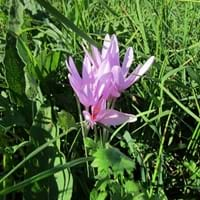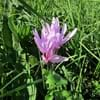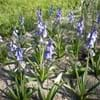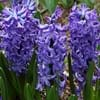Life Span
Perennial
Perennial
Type
Bulb or Corm or Tuber
Tree
Origin
Europe, Turkey, Central Asia, Western Asia
Northeastern United States, Mid-Atlantic United States, Southeastern United States, Central United States, Canada
Types
Colchicum cupanii, Colchicum alpinum
Northern shagbark hickory, Southern shagbark hickory
Number of Varieties
Not Available
Habitat
Fields, meadows, Rocky areas, Shaded sites, Woodlands
Woodland Garden Canopy
USDA Hardiness Zone
Not Available
4-8
AHS Heat Zone
Not Available
8-1
Sunset Zone
21,22
Not Available
Habit
Clump-Forming
Oval or Rounded
Flower Color
White, Yellow, Purple, Violet
Not Available
Flower Color Modifier
Bicolor
Bicolor
Fruit Color
Not Available
Not Available
Leaf Color in Spring
Green
Not Available
Leaf Color in Summer
Light Green
Not Available
Leaf Color in Fall
Several shades of Green
Not Available
Leaf Color in Winter
Light Green
Not Available
Leaf Shape
Long Linear
Pinnate
Plant Season
Spring, Fall, Winter
Spring, Summer, Fall
Sunlight
Full Sun, Partial Sun
Full Sun
Type of Soil
Loam
Loam, Sand
The pH of Soil
Acidic, Neutral
Acidic, Neutral
Soil Drainage
Well drained
Well drained
Bloom Time
Early Spring, Late Summer, Early Fall, Fall, Late Fall, Winter, Late Winter
Not Available
Tolerances
Drought
Not Available
Where to Plant?
Container, Ground, Pot
Ground
How to Plant?
Divison, Seedlings
Seedlings
Plant Maintenance
Low
Medium
Watering Requirements
Do Not over Water, Medium, Needs less watering, Never Over-water, Requires regular watering, Water less during winter
Average Water Needs
In Summer
Ample Water
Lots of watering
In Spring
Less Watering
Moderate
In Winter
Less Watering
Average Water
Soil pH
Acidic, Neutral
Acidic, Neutral
Soil Type
Loam
Loam, Sand
Soil Drainage Capacity
Well drained
Well drained
Sun Exposure
Full Sun, Partial Sun
Full Sun
Pruning
Remove damaged leaves, Remove dead leaves, Remove dead or diseased plant parts, Remove shoots
Remove damaged leaves, Remove dead branches, Remove dead leaves
Fertilizers
fertilize in growing season, Less fertilizing
Apply 10-10-10 amount
Pests and Diseases
Not Available
Leaf spot, Powdery mildew, Trunk Rot, Verticillium Wilt
Plant Tolerance
Drought
Drought
Flowers
Showy
Insignificant
Flower Petal Number
Single, Double
Not Available
Foliage Texture
Coarse
Not Available
Foliage Sheen
Not Available
Not Available
Attracts
Bees, Butterflies
Mice, Red and Gray Squirrels
Allergy
Kidney Disease, Low blood pressure, Stomach pain, Toxic, Vomiting
breathing problems, Mouth itching, Sore Throat, Swelling, Throat itching
Aesthetic Uses
Landscape Designing
Not Used For Aesthetic Purpose
Beauty Benefits
No Beauty Benefits
Moisturizing
Environmental Uses
Air purification, No fertilizer, pesticides, or herbicides needed, Prevent Soil Erosion
Air purification
Medicinal Uses
anti-cancer, anti-inflammatory, Diarrhea, Diuretic, Rheumatism
Analgesic, Antirheumatic
Part of Plant Used
Flowers, Leaves
Sap, Seeds
Other Uses
Employed in herbal medicine, Showy Purposes, Used as Ornamental plant, Used for its medicinal properties
Used as an excellent fuel, Used in pies, cakes, Used to make yellow dye, used to prepare nut milk
Used As Indoor Plant
Yes
No
Used As Outdoor Plant
Yes
Yes
Garden Design
Alpine, Container, Cutflower, Foundation, Lawns and Turf, Mixed Border, Rock Garden / Wall, Wildflower
Edible, Shade Trees
Botanical Name
COLCHICUM
CARYA ovata
Common Name
Colchicum
Shagbark Hickory
In Hindi
colchicum
Shagbark Hickory
In German
colchicum
Shagbark Hickory
In French
colchique
Caryer ovale
In Spanish
Colchicum
Shagbark Hickory
In Greek
Colchicum
Shagbark Hickory
In Portuguese
Colchicum
Shagbark Hickory
In Polish
Colchicum
ORZESZNIK PIĘCIOLISTKOWY
Phylum
Magnoliophyta
Magnoliophyta
Class
Liliopsida
Magnoliopsida
Order
Liliales
Juglandales
Family
Liliaceae
Juglandaceae
Clade
Angiosperms, Monocots
Angiosperms, Eudicots, Rosids
Tribe
Not Available
Juglandeae
Subfamily
Wurmbaeiodeae
Juglandoideae
Number of Species
Not Available
Importance of Colchicum and Shagbark Hickory
Want to have the most appropriate plant for your garden? You might want to know the importance of Colchicum and Shagbark Hickory. Basically, these two plants vary in many aspects. Compare Colchicum and Shagbark Hickory as they differ in many characteristics such as their life, care, benefits, facts, etc. Every gardener must at least have the slightest clue about the plants he wants to plant in his garden. Compare their benefits, which differ in many ways like facts and uses. The medicinal use of Colchicum is anti-cancer, anti-inflammatory, Diarrhea, Diuretic and Rheumatism whereas of Shagbark Hickory is Analgesic and Antirheumatic. Colchicum has beauty benefits as follows: No Beauty Benefits while Shagbark Hickory has beauty benefits as follows: No Beauty Benefits.
Compare Facts of Colchicum vs Shagbark Hickory
How to choose the best garden plant for your garden depending upon its facts? Here garden plant comparison will help you to solve this query. Compare the facts of Colchicum vs Shagbark Hickory and know which one to choose. As garden plants have benefits and other uses, allergy is also a major drawback of plants for some people. Allergic reactions of Colchicum are Kidney Disease, Low blood pressure, Stomach pain, Toxic and Vomiting whereas of Shagbark Hickory have breathing problems, Mouth itching, Sore Throat, Swelling and Throat itching respectively. Having a fruit bearing plant in your garden can be a plus point of your garden. Colchicum has no showy fruits and Shagbark Hickory has no showy fruits. Also Colchicum is not flowering and Shagbark Hickory is not flowering . You can compare Colchicum and Shagbark Hickory facts and facts of other plants too.





